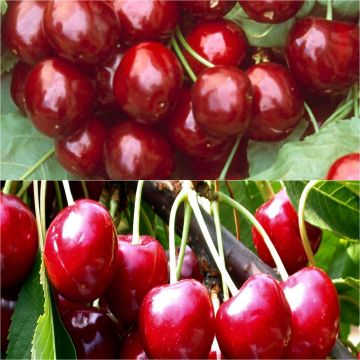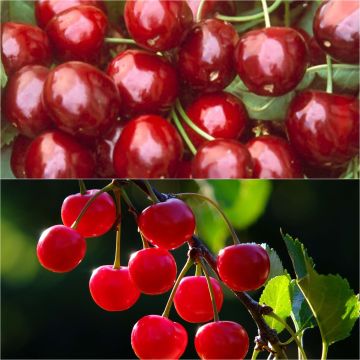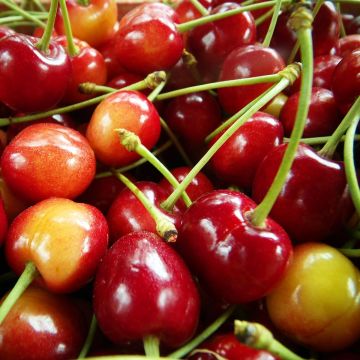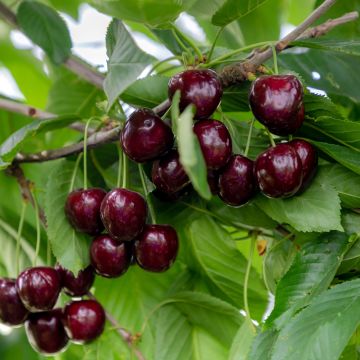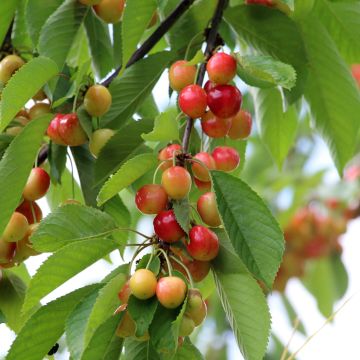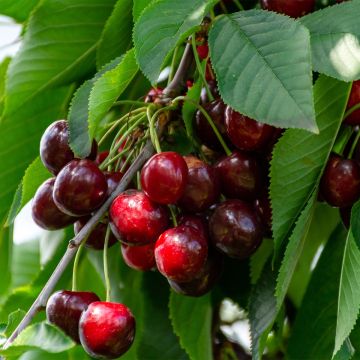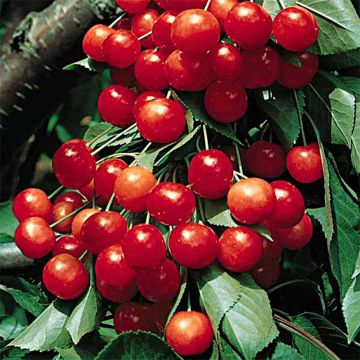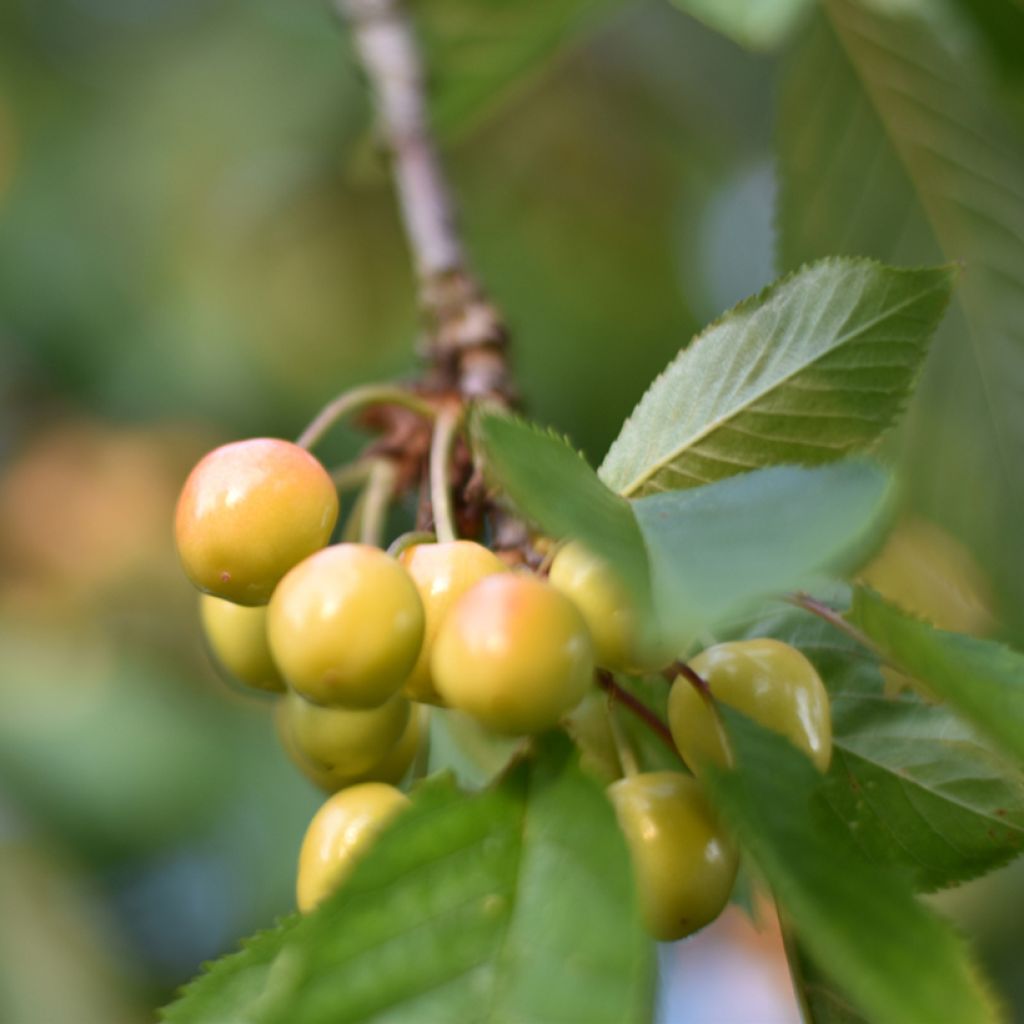

Cerisier Bigarreau Blanc ou Trompe Geai Bio
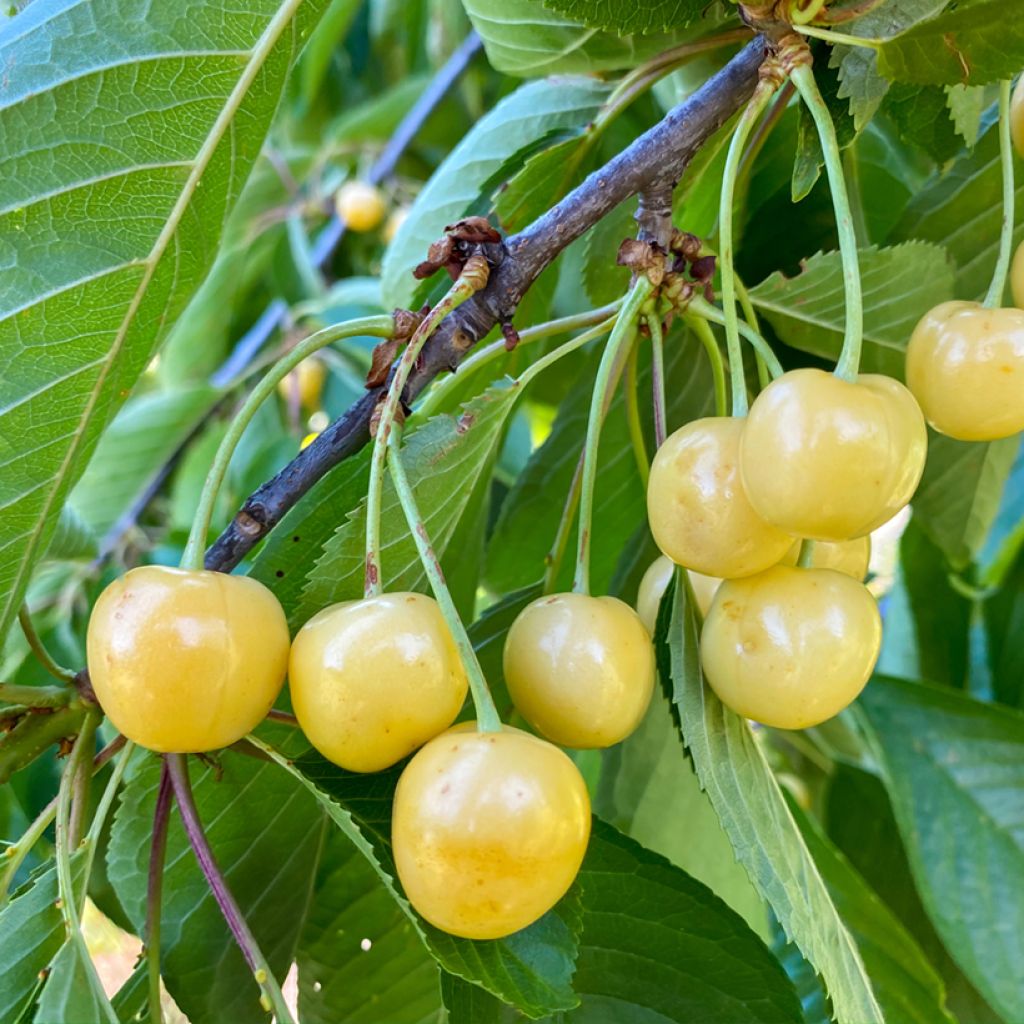

Cerisier Bigarreau Blanc ou Trompe Geai Bio
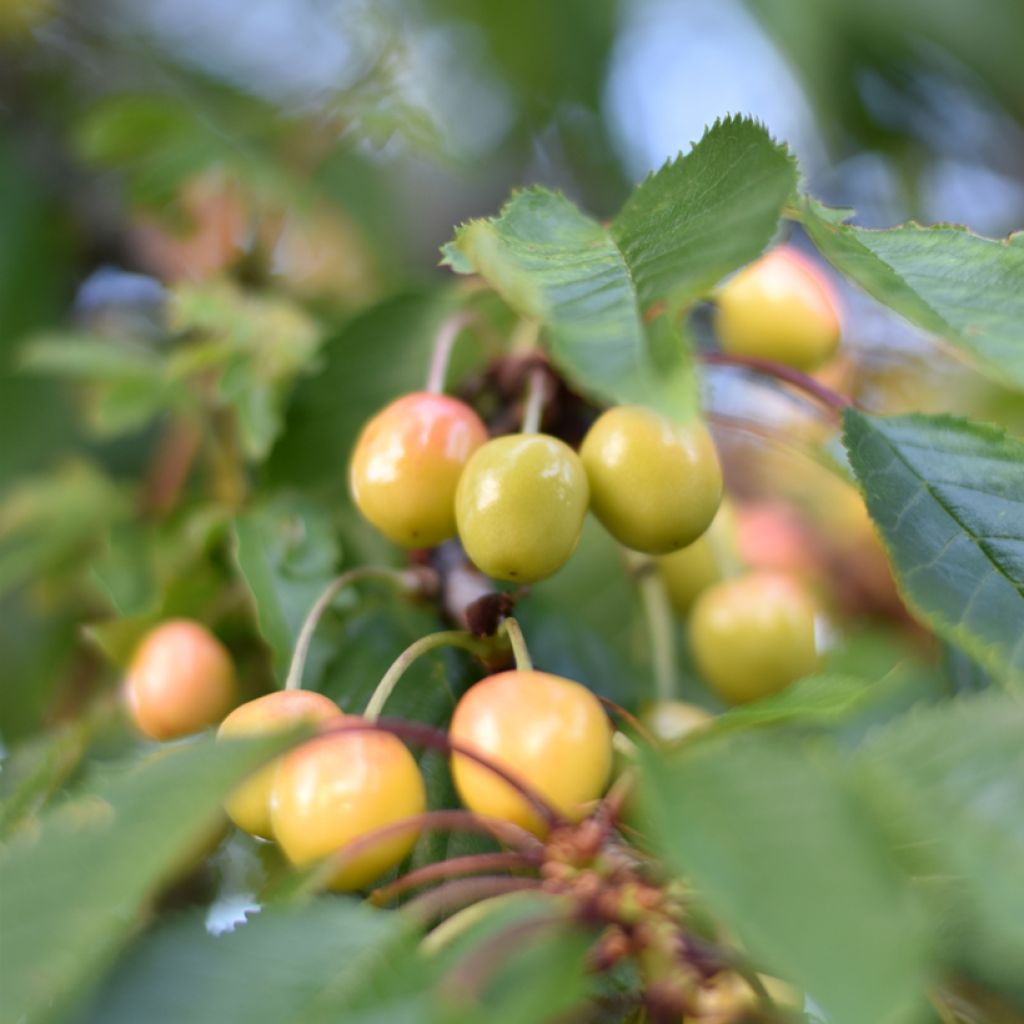

Cerisier Bigarreau Blanc ou Trompe Geai Bio
Prunus avium Bigarreau Blanc - Cherry Tree
Prunus avium Bigarreau Blanc
Wild Cherry, Sweet Cherry, Bird Cherry
Special offer!
Receive a €20 voucher for any order over €90 (excluding delivery costs, credit notes, and plastic-free options)!
1- Add your favorite plants to your cart.
2- Once you have reached €90, confirm your order (you can even choose the delivery date!).
3- As soon as your order is shipped, you will receive an email containing your voucher code, valid for 3 months (90 days).
Your voucher is unique and can only be used once, for any order with a minimum value of €20, excluding delivery costs.
Can be combined with other current offers, non-divisible and non-refundable.
Home or relay delivery (depending on size and destination)
Schedule delivery date,
and select date in basket
This plant carries a 6 months recovery warranty
More information
We guarantee the quality of our plants for a full growing cycle, and will replace at our expense any plant that fails to recover under normal climatic and planting conditions.
Description
The Bigarreau Blanc Organic Cherry Tree, also known as Trompe Geai, is characterised by its delicious fruits that can be picked from the tree from mid-June onwards. It produces medium-sized cherries, measuring 2 to 2.5cm (1in) in diameter, heart-shaped (cordate) with a very thin, almost transparent, shiny skin, of a very light yellow colour that can turn slightly red when exposed to sunlight. The creamy white flesh is firm, melting, with colourless juice, very sweet, slightly acidic, and delicately flavoured. The cherries should be picked as they ripen, along with their stalks to improve their storage. The spectacular flowering occurs in April, covering the tree with an elegant and delicate mantle of white flowers. Highly ornamental with its upright and spreading habit, it can provide shade in summer. Being a productive variety and resistant to cold, it can be grown in all types of soil, except for excessively clayey ones, and is not very susceptible to diseases. It is a fruit tree that is easy to establish and requires almost no maintenance. Preferably planted in autumn.
Plant derived from organic agriculture.
Prunus avium belongs to the Rosaceae family, like the Wild Cherry Tree (Prunus cerasus). Also known as the Sweet Cherry or Bird Cherry, it is native to Europe, Western Asia, and North Africa, and has been present in Europe since the Neolithic age (Polished Stone Age).
The Bigarreau Blanc, also known as the Trompe Geai, is an old variety that is believed to originate from the Landes region in Aquitaine, France. This sweet cherry forms a vigorous tree with an upright silhouette that spreads with age, moderately branching, and can reach approximately 5 to 6 metres (16 to 20 feet) in height and 3 to 5 metres (10 to 16 feet) in width when fully grown. The reddish-brown wood is characteristic of cherry trees. Its habit is well suited for free forms on tall or half-standard stems, as well as low goblet shapes. The deciduous foliage consists of large, alternately arranged, obovate leaves, irregularly toothed, shiny green, turning brownish-orange in autumn. The relatively late flowering occurs in the second half of April, before the leaves appear, which generally protects it from late spring frosts. The pure white flowers, measuring 2 to 3cm (1in) in diameter, are single and grouped in clusters. They can be damaged by frost at temperatures below -2 to -3°C, so it is recommended to plant cherry trees in sheltered, west-facing locations protected from cold winds in regions prone to late frosts. On the plus side, the very abundant flowering often results in satisfying fruiting. It is remarkably decorative spring flowering and particularly attractive to bees and rich in nectar. A hardy tree that can withstand temperatures as low as -20°C, it is suitable for cultivation in all regions, including mountainous areas. This cherry tree is self-sterile or self-incompatible, meaning the flowers cannot self-pollinate. Therefore the presence of other cherry tree varieties that flower at the same time is necessary. For example, the varieties Burlat, Early Rivers, Hedelfingen, Stark Gold, Summit, and Van are suitable for cross-pollination and increasing fruit set.
Prunus avium offers a harvest that can be more or less abundant depending on the year and may exhibit an alternation (biennial bearing) phenomenon, allowing the tree to replenish its reserves. With a relatively quick time to fruiting, around 3 to 4 years, fruit production becomes optimal after 6 to 7 years. An adult cherry tree (between 10 and 20 years old) produces an average of 25 to 50 kilograms of fruit per year. The fruit is attached to the branch by a relatively short petiole measuring 3 to 4cm (1 to 2in) in length. Harvesting begins around mid-June and continues until the end of June. It is important to only pick the fruits when they are fully ripe, as they do not ripen any further, and with their stalks to ensure good storage. Since cherries are quite delicate, they should be harvested using a picking pole or by hand using a ladder, always with care. Very juicy and sweet, these cherries are delicious when eaten raw. In cooking, they reveal all their flavours in the making of clafoutis, cakes, crumbles, or pies, fruit salads, and as an accompaniment to savoury dishes with white meats (turkey, chicken, veal, duck, etc.). They are also perfect for making jams, preserving in syrup, or canning.
The cherry's high content of vitamins A, C, and E, phenolic antioxidants, calcium, and copper, with a significant contribution of iron, plus its richness in trace elements and fibre, make it a health asset. The fruits can only be stored for a few days in a cool place or in the refrigerator. They can also be frozen after being washed, dried, stemmed, and pitted.
Very popular, the cherry tree finds its rightful place in the garden planted on a lawn, in an orchard, or as part of a fruiting hedge. Bringing pleasure to young and old, from among a wide range of cherry trees it is easy to find the variety that best suits your tastes.
Prunus avium Bigarreau Blanc - Cherry Tree in pictures
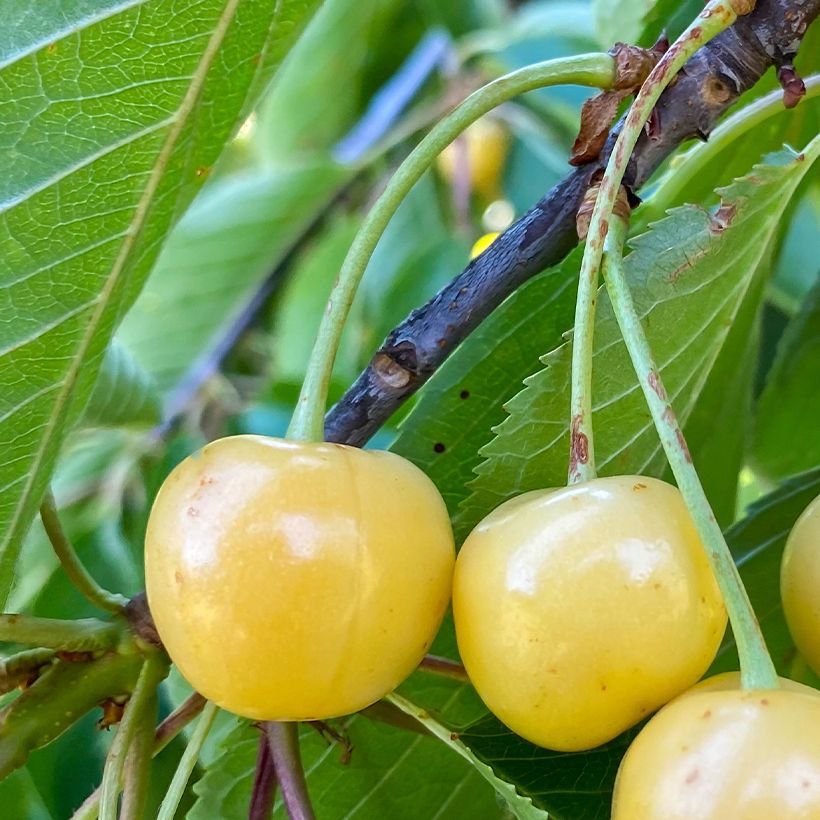

Plant habit
Fruit
Flowering
Foliage
Botanical data
Prunus
avium
Bigarreau Blanc
Rosaceae
Wild Cherry, Sweet Cherry, Bird Cherry
Cultivar or hybrid
Other Cherry trees
View all →Planting and care
The Bigarreau Blanc Cherry tree grows in any type of soil, acidic or alkaline. It appreciates moist, light soils and is sensitive to heavy and clayey soils. Choose a sunny location. In order to limit the risk of late frosts to the flowers, it is recommended to plant the cherry tree in a sheltered position, facing west and protected from cold winds in regions that experience spring frosts. Planting is preferably done in autumn or, if not possible, in winter, but outside frosty periods. If you plant multiple trees, space them 7 to 10m (23 to 33ft) apart for "high-stem" cherry trees, 5 to 7m (16 to 23ft) apart for "half-stem" cherry trees, and 4 to 5m (13 to 16ft) apart for goblet and quenouille (cone-shaped) training.
Loosen the soil deeply, remove stones and unwanted weeds. Add some sand to improve drainage. Dig a hole 4 to 5 times the volume of the root ball. Make sure to separate the subsoil and the topsoil. Mix crushed horn or well-rotted compost or potting soil with the subsoil and pour this mixture into the bottom of the planting hole. Install a stake. Place the root ball, cover with the topsoil, and firm it down. Water generously (about 10L). Tie the stake to the plant, crossing the tie in the shape of an 8.
The cherry tree may be subject to various diseases and pests. To combat grey rot (velvety rot on the fruits) and brown rot (wilting of the flowers and rotting of the fruits on the tree), remove and burn the affected parts as a curative measure, and as a preventive measure, spray Bordeaux mixture or decoctions of horsetail or garlic in early spring and autumn. To combat bacterial canker (wilting of floral clusters, brown spots, bark deformation), spray Bordeaux mixture. As for pests, the cherry fly or fruit worm can be controlled preventively by installing yellow cardboard discs covered in glue in spring, or pheromone traps (male insect trapping), or a Drosophile trap, which is easy to make from a plastic bottle. In case of black aphid attack spray a mixture of water and black soap, or water and vegetable oil.
Planting period
Intended location
Care
Planting & care advice
This item has not been reviewed yet - be the first to leave a review about it.
Haven't found what you were looking for?
Hardiness is the lowest winter temperature a plant can endure without suffering serious damage or even dying. However, hardiness is affected by location (a sheltered area, such as a patio), protection (winter cover) and soil type (hardiness is improved by well-drained soil).

Photo Sharing Terms & Conditions
In order to encourage gardeners to interact and share their experiences, Promesse de fleurs offers various media enabling content to be uploaded onto its Site - in particular via the ‘Photo sharing’ module.
The User agrees to refrain from:
- Posting any content that is illegal, prejudicial, insulting, racist, inciteful to hatred, revisionist, contrary to public decency, that infringes on privacy or on the privacy rights of third parties, in particular the publicity rights of persons and goods, intellectual property rights, or the right to privacy.
- Submitting content on behalf of a third party;
- Impersonate the identity of a third party and/or publish any personal information about a third party;
In general, the User undertakes to refrain from any unethical behaviour.
All Content (in particular text, comments, files, images, photos, videos, creative works, etc.), which may be subject to property or intellectual property rights, image or other private rights, shall remain the property of the User, subject to the limited rights granted by the terms of the licence granted by Promesse de fleurs as stated below. Users are at liberty to publish or not to publish such Content on the Site, notably via the ‘Photo Sharing’ facility, and accept that this Content shall be made public and freely accessible, notably on the Internet.
Users further acknowledge, undertake to have ,and guarantee that they hold all necessary rights and permissions to publish such material on the Site, in particular with regard to the legislation in force pertaining to any privacy, property, intellectual property, image, or contractual rights, or rights of any other nature. By publishing such Content on the Site, Users acknowledge accepting full liability as publishers of the Content within the meaning of the law, and grant Promesse de fleurs, free of charge, an inclusive, worldwide licence for the said Content for the entire duration of its publication, including all reproduction, representation, up/downloading, displaying, performing, transmission, and storage rights.
Users also grant permission for their name to be linked to the Content and accept that this link may not always be made available.
By engaging in posting material, Users consent to their Content becoming automatically accessible on the Internet, in particular on other sites and/or blogs and/or web pages of the Promesse de fleurs site, including in particular social pages and the Promesse de fleurs catalogue.
Users may secure the removal of entrusted content free of charge by issuing a simple request via our contact form.
The flowering period indicated on our website applies to countries and regions located in USDA zone 8 (France, the United Kingdom, Ireland, the Netherlands, etc.)
It will vary according to where you live:
- In zones 9 to 10 (Italy, Spain, Greece, etc.), flowering will occur about 2 to 4 weeks earlier.
- In zones 6 to 7 (Germany, Poland, Slovenia, and lower mountainous regions), flowering will be delayed by 2 to 3 weeks.
- In zone 5 (Central Europe, Scandinavia), blooming will be delayed by 3 to 5 weeks.
In temperate climates, pruning of spring-flowering shrubs (forsythia, spireas, etc.) should be done just after flowering.
Pruning of summer-flowering shrubs (Indian Lilac, Perovskia, etc.) can be done in winter or spring.
In cold regions as well as with frost-sensitive plants, avoid pruning too early when severe frosts may still occur.
The planting period indicated on our website applies to countries and regions located in USDA zone 8 (France, United Kingdom, Ireland, Netherlands).
It will vary according to where you live:
- In Mediterranean zones (Marseille, Madrid, Milan, etc.), autumn and winter are the best planting periods.
- In continental zones (Strasbourg, Munich, Vienna, etc.), delay planting by 2 to 3 weeks in spring and bring it forward by 2 to 4 weeks in autumn.
- In mountainous regions (the Alps, Pyrenees, Carpathians, etc.), it is best to plant in late spring (May-June) or late summer (August-September).
The harvesting period indicated on our website applies to countries and regions in USDA zone 8 (France, England, Ireland, the Netherlands).
In colder areas (Scandinavia, Poland, Austria...) fruit and vegetable harvests are likely to be delayed by 3-4 weeks.
In warmer areas (Italy, Spain, Greece, etc.), harvesting will probably take place earlier, depending on weather conditions.
The sowing periods indicated on our website apply to countries and regions within USDA Zone 8 (France, UK, Ireland, Netherlands).
In colder areas (Scandinavia, Poland, Austria...), delay any outdoor sowing by 3-4 weeks, or sow under glass.
In warmer climes (Italy, Spain, Greece, etc.), bring outdoor sowing forward by a few weeks.
































